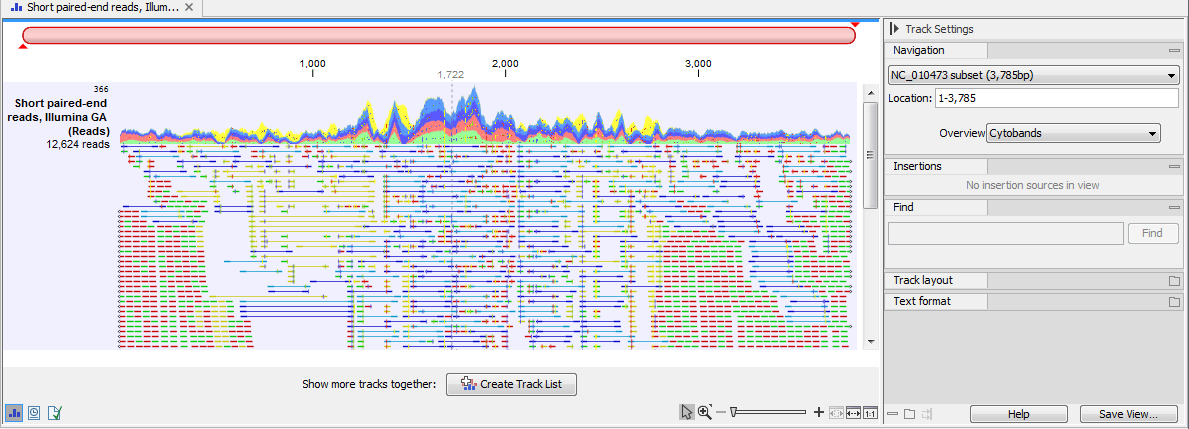Tracks
A track is the fundamental building block for NGS analysis in the CLC Genomics Workbench. The idea behind tracks is to provide a unified framework for the visualization, comparison and analysis of genome-scale studies such as whole-genome sequencing or exome resequencing projects and a variety of different -Seq data (i.e. RNA-Seq, ChIP-Seq, DNAse-Seq).
In tracks, all information is tied to genomic positions, with the central coordinate system provided by a reference genome. Different types of data, and results for different samples, can be visualized and analyzed together as long as the tracks are compatible, i.e. they share the same coordinate system. Compatible tracks contain the same number of chromosomes, with the chromosome lengths being the same in each track. If two chromosomes have the same length, then the chromosome names must be identical for the tracks to be considered compatible.
Different types of data are represented in different types of tracks, and each type of track has its own particular editors. An example of a paired-end mapping read-track displaying reads and coverage is shown in figure 25.1.

Figure 25.1: A paired-end mapping read-track opened, displaying reads and coverage. Below the track, the button for creating a Track List is visible. On the right is the Side Panel.
Subsections
- Track types
- Working with tracks
- Track lists
- Retrieving reference data tracks
- Merge Annotation Tracks
- Merge Variant Tracks
- Track Conversion
- Annotate and Filter
- Graphs
